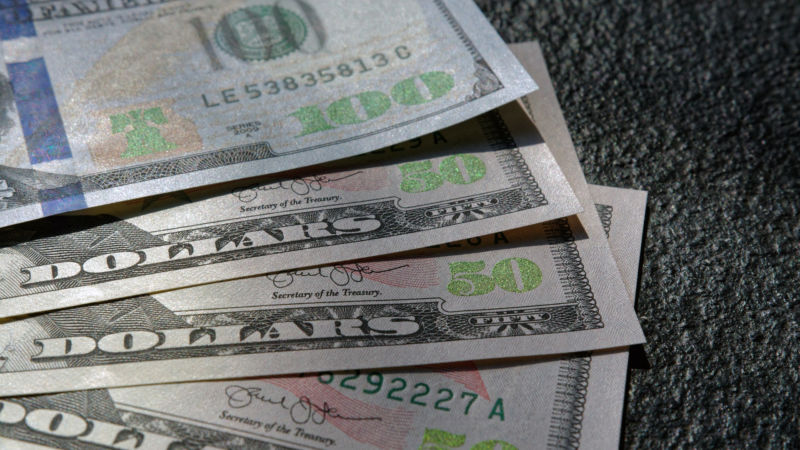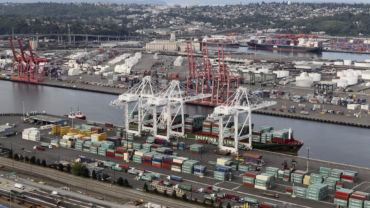As the delicate dance of debt ceiling and default continues to play out between the President and the GOP members of the House, a variety of outcomes are possible
The debt limit — an idiosyncratic feature of American government which hard caps the amount of debt the country can borrow, separate from the spending mandates passed by Congress — has the potential to result in a default for the world’s wealthiest economy.
Yet rather than a binary outcome, the global economy actually faces multiple scenarios which could heavily impact global trade, many of which are the result of means meant to actually bypass the debt ceiling and avoid default.
Thus, it’s important to map out the potential impact of the different options so that companies and organizations can both understand the implications of different strategies and prepare for the surprisingly varied outcomes, many of which would still massively impact global trade.
The trillion-dollar coin
One of the most talked about but seemingly comical scenarios involves the minting of a trillion-dollar coin. This possibility utilizes the U.S. Treasury’s relatively uninhibited ability to mint money to generate the funds necessary to continue government spending without increasing the debt.
The issue is that this amounts to little more than turning on the money printer, a measure which has historically caused intense inflation, an economic challenge only starting to come under control. While this would keep the United States from default, inflation would not be the only cost, as confidence in the U.S. government and the dollar would likely take a significant hit. Global financial markets could see a bout of instability due to this decrease in confidence, which may make financing operations more difficult.
This workaround is nothing new, as the temptation for government to print its way out of a debt crisis has been a longstanding fantasy with often dire results. One can think of this as the Ford Pinto scenario, a classically dangerous vehicle rolled out despite far superior options being available.
Premium Treasury bonds
If the trillion-dollar coin scenario is the Ford Pinto, then the strategy of issuing a series of premium Treasury bonds is the Ferrari Daytona: more powerful, more refined, and slightly more likely to get you to your destination uninjured.
This scenario relies on a legal quirk, where the debt ceiling applies only to the face value of outstanding government debt. Here, what the government would do is reissue already outstanding bonds with an additional payment premium, basically promising a higher interest rate in exchange for a burst of upfront cash. This both avoids default by injecting additional revenues into the government’s cash flow and avoids the inflation-fueling effect that minting a trillion dollars would have.
In addition, the savviness of the solution may bolster confidence in the U.S. government’s ability to manage itself, as well as lessen the potential impact of future debt ceiling crises if found to be a workable solution. For global trade, the primary challenge would be the possible mixed market reaction, but the turmoil here would be light.
The primary threat would be the exact opposite of the trillion-dollar coin. Rather than sparking inflation, the premium bonds could result in deflationary pressure. For global trade, deflation in the U.S. could be a greater threat than inflation, sapping consumer spending and creating a myriad of other issues which are relatively exotic and potentially dangerous. Some economic concerns already exist that suggest that the U.S. could go into a deflationary cycle soon, so adding further deflationary pressure could add fuel to this concern.
The sticking point is that this scenario is unlikely given the remaining time before the U.S. hits the default point. Bond programs like this take time to set up and every day closer to default-day the United States approaches, the less likely premium Treasury bonds can be implemented. Depending on how the current conflict resolves, premium bonds may be a more tempting solution in the future.
14th Amendment Constitutional crisis
The 14th Amendment of the constitution states that: “The validity of the public debt of the United States… shall not be questioned.”
This gives an opening for president to declare the debt limit itself as unconstitutional and the issue null and void. But this does not mean that the potential impacts of a debt ceiling crisis would be swept away. Rather, they would hang over the heads of the global economy like a sword of Damocles as an inevitable court battle rages though the U.S. legal system.
An unfavorable Supreme Court verdict could plunge the U.S. into default with little warning, throwing the global economy into turmoil and actually making things worse than if the U.S. defaulted on the original date. Simply the heightened uncertainty preceding a verdict could make currency markets unstable and roil other financial markets until the constitutional crisis is resolved. Any instability in such markets will only make global trade more difficult and riskier.
In the long term, if this move were to be upheld, it could potentially strengthen international confidence in the U.S.’s ability to meet its debt obligations and bolster its stability by removing the possibility of another debt ceiling conflict. This would thereby bolster U.S. trade negotiating positions and reinforce its standing as a central hub of global trade.
Non-technical default
As addressed previously, another option available to the Treasury to avoid default in the technical sense is to redirect its remaining cashflow towards paying back debt holders. Think of it like having a pitcher and two glasses: there may not be enough water to fill both glasses, but instead of evenly distributing the liquid, you could instead focus on filling one glass to satisfaction. Doing so with bonds would keep the U.S. from technically defaulting and deter the worst of the consequences.
The issue is that, with more of the cash flow going to bonds, there will be even less to go towards government spending such as social security, pay for government employees/military, and economic programs. The likely result is a deep domestic recession which could spread globally. Yet for global trade, this would resemble a more traditional economic crunch, one already well-explored. Some rearranging of global trade away from the United States and a loss of trade prestige for the dollar would be probable, but not quite to the scale as a full default would have.
Full default
The fallout of a full default is simultaneously well-explored and completely alien, with few available historical examples to guide expectations. What is most likely is global economic distress and financial market chaos as the most risk-free asset in the global market suddenly fails. The shift away from the United States both as an economic hub and the head of the world financial order would be a likely and swift outcome, with a large scale-rearrangement of global trade.
Indeed, the global ramifications would be deep and contagious, likely pulling the rest of the world down with the United States into recession.
A full default is the worst-case scenario, one where winners are defined by those who lose the least. This remains an unlikely outcome, in the same way that a nuclear war is unlikely due to its promise of mutual destruction. In the same way, however, its possibility cannot be ignored.
Negotiated Settlement
The traditional way that the debt ceiling crises has been resolved in the past remains the most likely. Congress and the president will find a negotiated settlement to raise the debt ceiling in exchange for some level of concessions.
For global trade, the only likely result is slightly higher interest rates and some minor movement in the financial world, escalating as negotiations approach the deadline. Fears will fade and the mainline expectations for global trade will reassert themselves as if this never happened in the first place… until it happens all over again.







